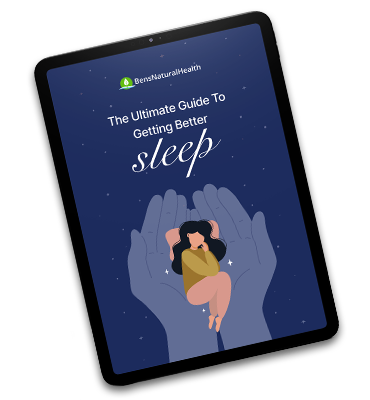The World Health Organization estimated that anemia affects half a billion women aged 15 to 49 years old and 269 million children below 5 years old worldwide.
In the United States, anemia is one of the main causes of people visiting emergency departments and physician offices.
Anaemia happens when your body doesn’t have enough hemoglobin (the protein in red blood cells that carries oxygen) or when your red blood cells are defective or malfunctioning.
This causes failure of oxygen delivery to your different body parts.
As a result, you may look pale, feel tired, dizzy, or light-headed, have cold hands and feet, headaches, and shortness of breath, especially during exertion.
If treatment is not given in time, you may experience severe anemia, which comes with rapid breathing, abnormally fast heartbeats, syncope, and eventually death.
In this article, we will focus on one of the most common causes of anemia: nutritional deficiency anemia and foods to eat and avoid if you’re anemic.
Foods to avoid if you have anemia
Some food substances interfere with iron absorption, hence predisposing our body to anemia.
However, do not completely avoid these foods as they contain their own health benefits.
1) Phytate
Phytate is a natural substance found in plants, commonly whole grains, seeds, legumes, and nuts.
It binds to many minerals (including iron), and since it cannot be absorbed by our gut, less iron is absorbed by our body.
Studies found that the higher the amount of phytate consumed, the lower the amount of iron absorbed.
Examples of phytate-rich foods are:
- Cereals: Maize germ, Wheat bran, Wheat germ, Rice bran, Barley, Sorghum, Oat, Rye, Millet
- Legumes: Kidney beans, Peas, Chickpeas, Lentils
- Oilseeds: Soybeans, Linseed, Sesame seed, Sunflower meal
- Nuts: Peanuts, Almonds, Walnuts, Cashew nuts
2) Polyphenols
Polyphenols are a group of bioactive compounds present in fruits and vegetables.
Although it exerts protective effects against many chronic diseases, it can bind to iron and reduce iron absorption by our body.
Below is the list of foods rich in polyphenols:
- Fruits: apples, cherries, berries, plums, blueberries, grapes
- Vegetables: broccoli, lettuce, tomatoes, onions, parsley
- Legumes
- Cereals
- Coffee, tea, cocoa, chocolate
3) High calcium
Calcium helps to maintain strong bones. However, it stops iron from entering our gut cells, thus reducing iron absorbed by our body.
Therefore, avoid taking calcium and iron supplements together. Foods rich in calcium include:
- Dairy products: milk, yogurt, cheese
- Beans: Soy milk, tofu
- Fruits: orange, apple
- Seafood: sardines, salmon
- Vegetables: kale, broccoli, bok choi
4) Oxalic acid
The effect of oxalic acid on iron absorption is debatable. Some scientists believe that oxalic acid can bind to iron to form insoluble ferrous oxalate.
As a result, the insoluble compound cannot be absorbed by our gut.
Foods rich in oxalic acid include:
- Fruits: star fruit, elderberry, and dried fig
- Vegetables: rhubarb, Swiss chard, taro leaves, parsley, licorice
- Soybean
Get Your FREE Sleep Guide
- Learn how to naturally improve your sleep
- Dietary recommendations, supplements, and lifestyle changes
- Developed exclusively by our medical doctor
Best foods to eat if you’re anemic
Below is the list of the best foods for anemia.
1) Foods rich in iron
Iron deficiency is the most common nutritional deficiency leading to anemia, as reported by the World Health Organization.
Iron is a vital nutrient with various roles in the body, including contributing to the formation of red blood cells.
The U.S. Food and Nutrition Board (FNB) recommends every adult aged 19 to 50 years old to take at least 8mg (male) or 18mg (female) of iron daily.
If you are a vegetarian, you will need 1.8 times more iron intake.
Below is a list of food sources rich in iron:
- Iron-fortified breakfast cereals
- Oysters
- White beans
- Beef liver
- Lentils
- Spinach
- Tofu
- Dark chocolate
- Kidney beans
- Sardines
- Chickpeas
- Tomatoes
- Beef
- Potato
- Cashew nuts
2) Vitamin C foods
Vitamin C helps our body to absorb iron, therefore preventing anemia. Males have a higher daily requirement of vitamin C (90 mg) than females (75 mg), and smokers need an additional 35 mg.
Fruits and vegetables are the best sources of vitamin C, such as:
- Sweet red pepper
- Orange juice
- Orange
- Grapefruit juice
- Kiwifruit
- Sweet green pepper
- Broccoli
- Strawberries
- Brussels sprouts
- Grapefruit
- Tomato juice
- Cantaloupe
- Cabbage
- Cauliflower
3) Foods rich in folate and vitamin B12
Folate and vitamin B12 are essential nutrients in the DNA synthesis of red blood cells.
Lack of folate and vitamin B12 causes the production of defective red blood cells.
The FNB recommends a daily intake of 2.4 mcg of Vitamin B12 for adults, while pregnant and breastfeeding women require more at 2.6 mcg and 2.8 mcg.
For folate, the FNB recommends adults should take 400 mcg daily, pregnant ladies should take 600 mcg, and lactating mothers should take 500 mcg.
Below is a list of foods to eat that are high in vitamin b12 and folate.
High vitamin b12 foods
- Beef liver
- Clams (without shells)
- Nutritional yeast, fortified
- Salmon
- Tuna
- Beef, 85% lean meat/15% fat
- Milk, 2% milkfat
- Plain fat-free yogurt
- Vitamin B12-fortified breakfast cereals
- Cheddar cheese
- Egg
- Turkey, breast meat
- Tempeh
High folate foods
- Beef liver
- Spinach
- Black-eyed peas (cowpeas)
- Folate-fortified breakfast cereals
- White rice
- Asparagus
- Brussels sprouts
- Spaghetti
- Romaine lettuce
- Avocado
- Spinach
- Broccoli
- Mustard greens
- White bread
4) Foods rich in vitamin A
Research studies have discovered that vitamin A supplementation increases hemoglobin levels in anemic populations who have vitamin A deficiency.
Although the mechanism of how vitamin A improves anemia is still not completely clear, scientists believe that it is related to iron, such as increasing iron absorption, helping iron to better circulate in our body, and promoting red blood cell production.
The FNB recommends a daily intake of 900 mcg of vitamin A for males and 700 mcg for females.
Below is a list of vitamin A rich foods:
- Beef liver
- Sweet potato
- Spinach
- Pumpkin pie
- Carrots
- Atlantic herring, pickled
- French vanilla ice cream
- Skimmed milk with added vitamin A and vitamin D
- Cantaloupe
- Part skimmed ricotta cheese
- Sweet red pepper
- Mangos
| Foods to eat | Foods to avoid |
| Iron | Phytate |
| Folate and vitamin B12 | Polyphenols |
| Vitamin C | Calcium |
| Vitamin A | Oxalic acid |
Conclusion
This article covered the foods to eat and avoid if you have anemia.
Other than the food aspect, there are many other reasons which can cause anemia. For example, heavy menstrual bleeding and infections. Seek medical attention if you think you have anemia.
Explore More








